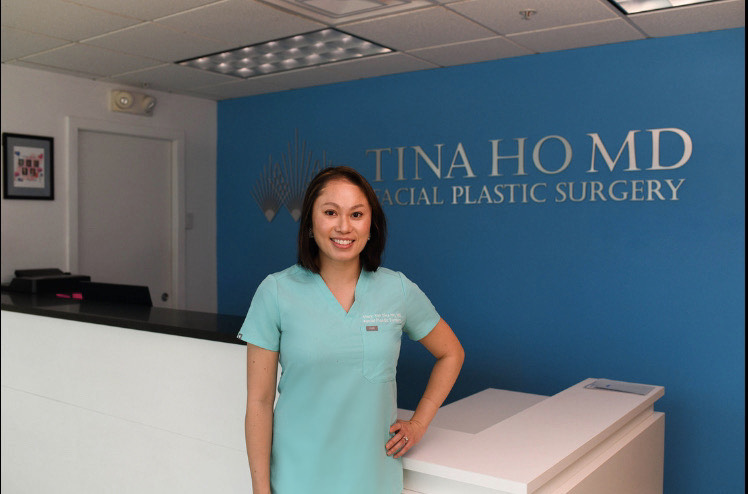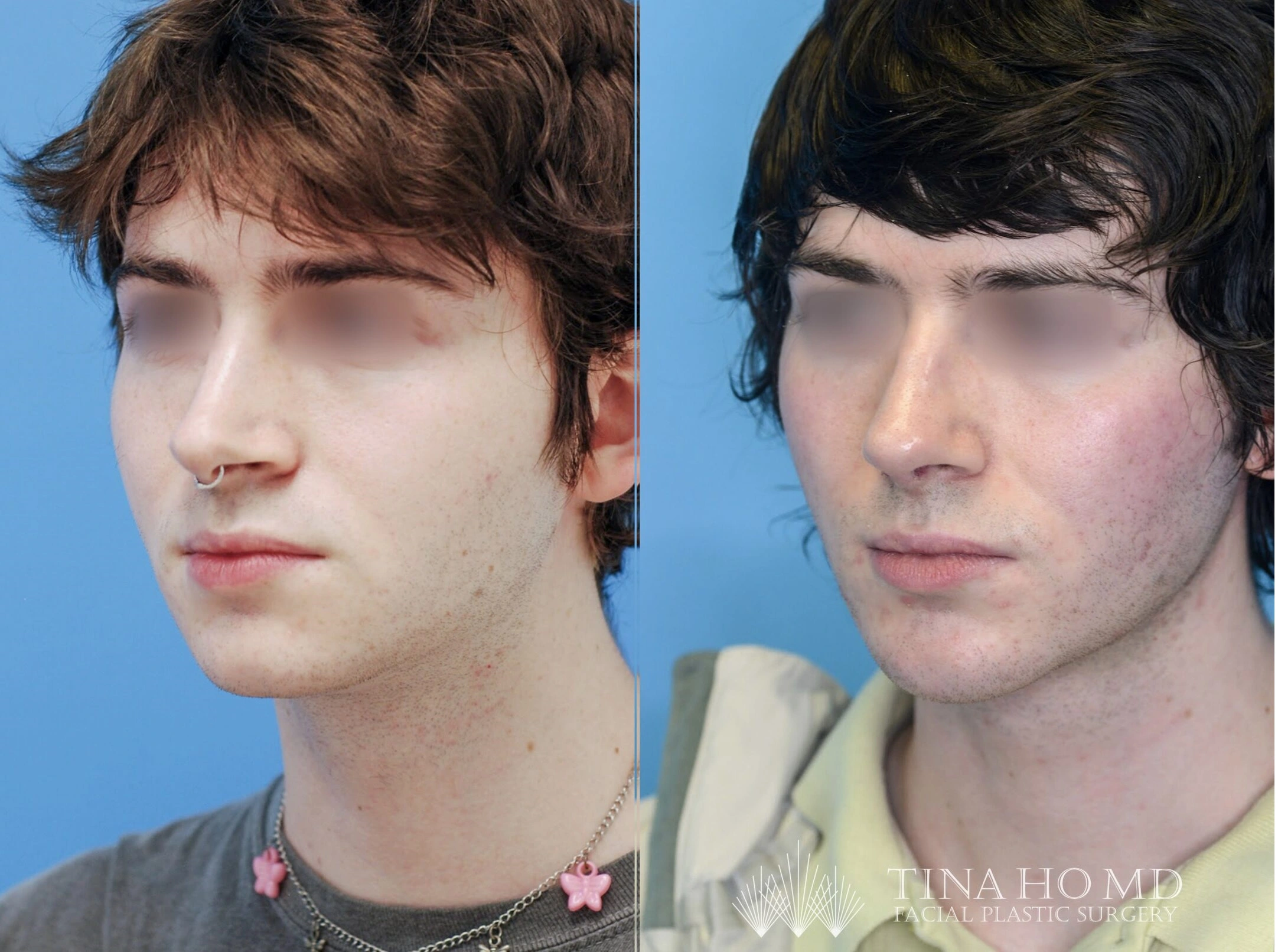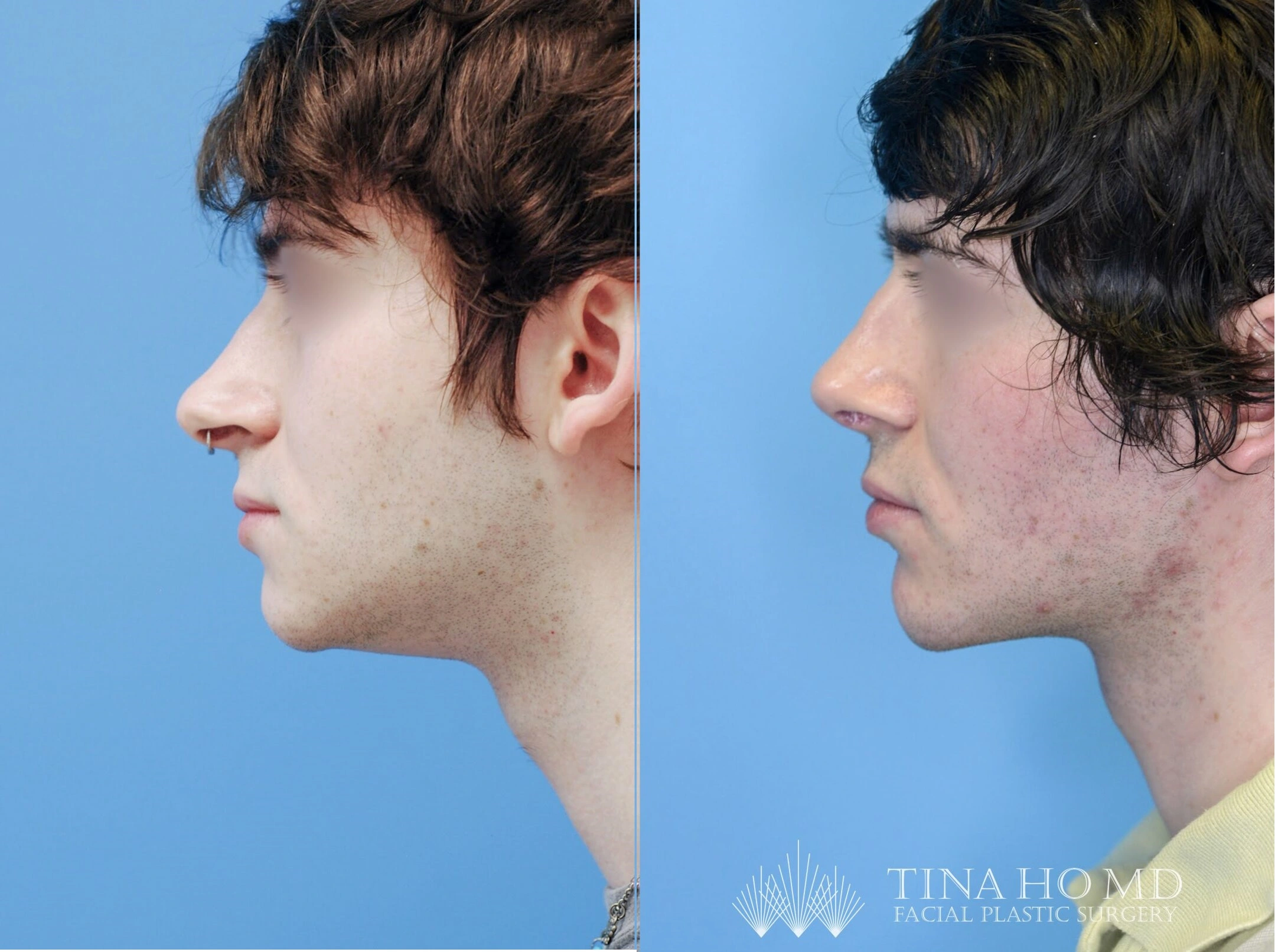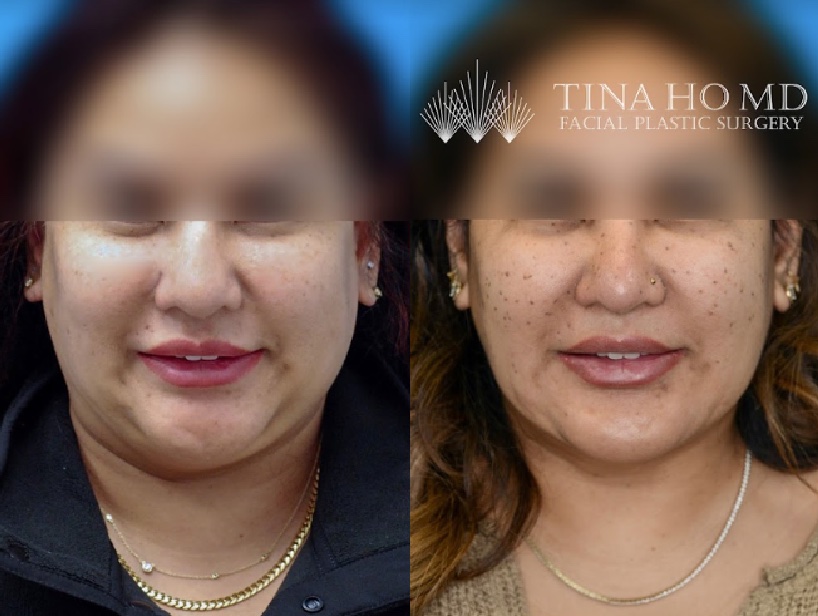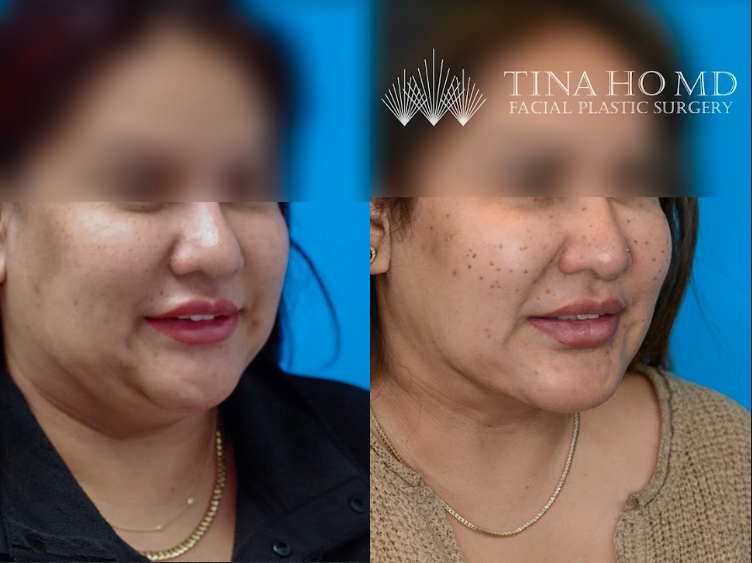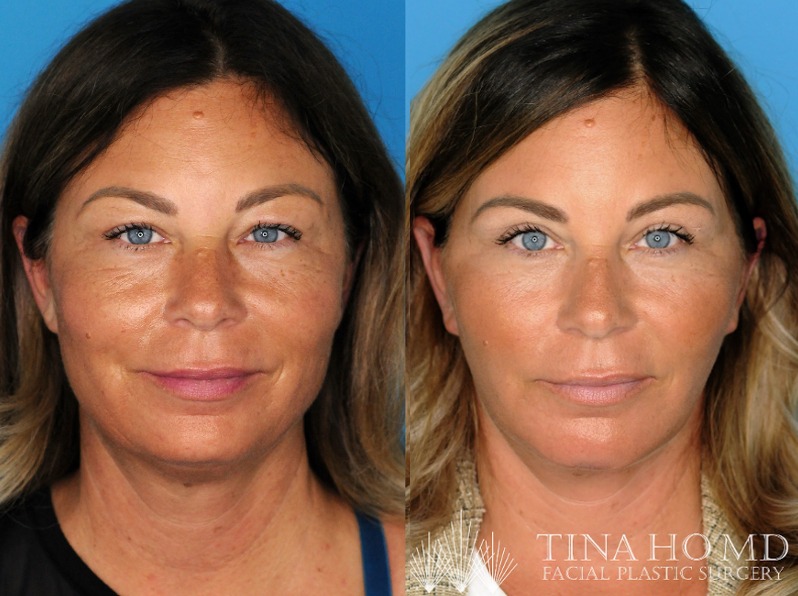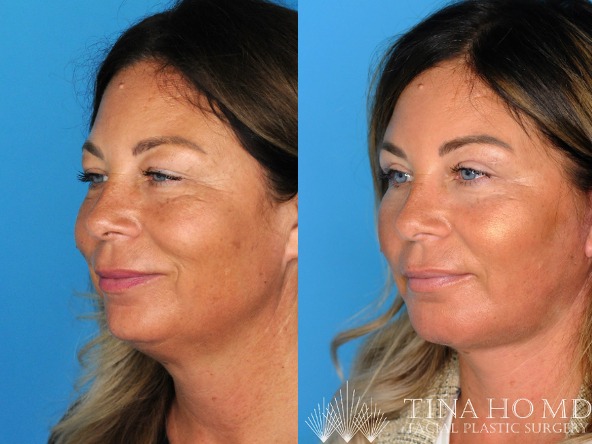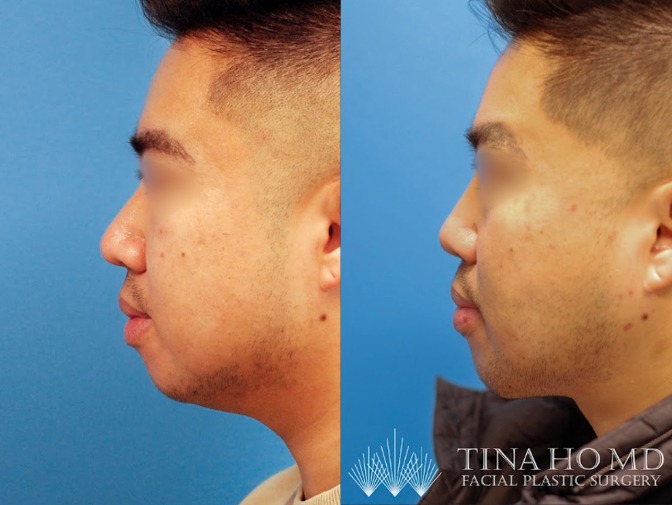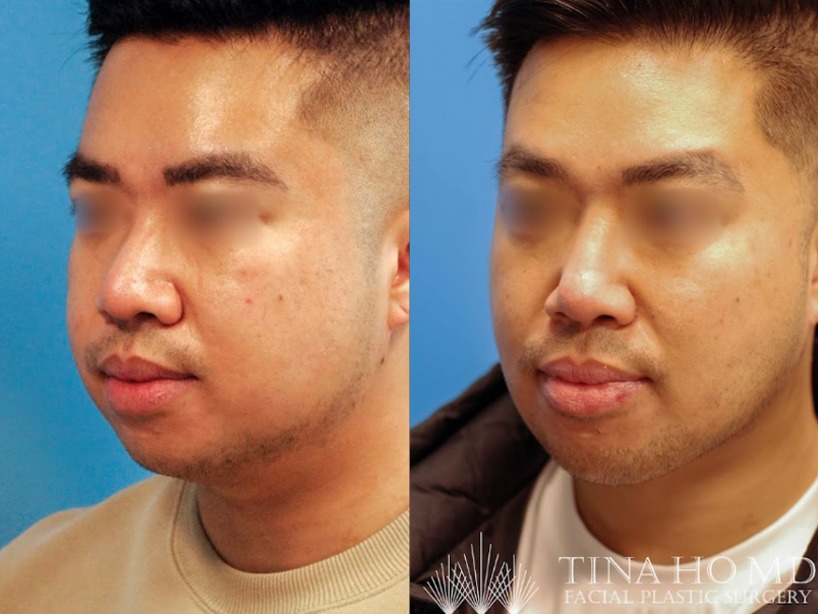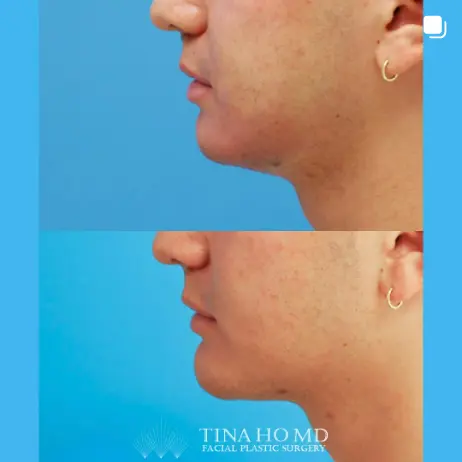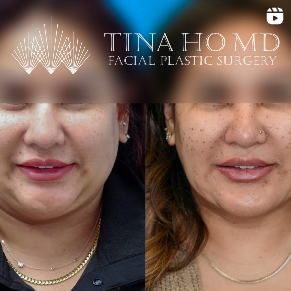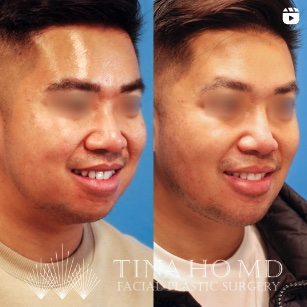Table of Contents


Before & After
View Gallery
Introduction to
Chin Augmentation
Book Now
Chin Augmentation Before and After
What is Chin Augmentation?
Chin augmentation is a common treatment option for patients seeking increased definition or projection in their chin and may be performed alone or in conjunction with other facial procedures. This procedure requires the expertise of a surgeon who specializes in plastic surgery of the face and understands facial anatomy well. Dr. Ho specializes in chin augmentation and performs each procedure according to the anatomic features and surgical goals of the individual patient.
What is Dr. Ho’s approach to Chin Augmentation?
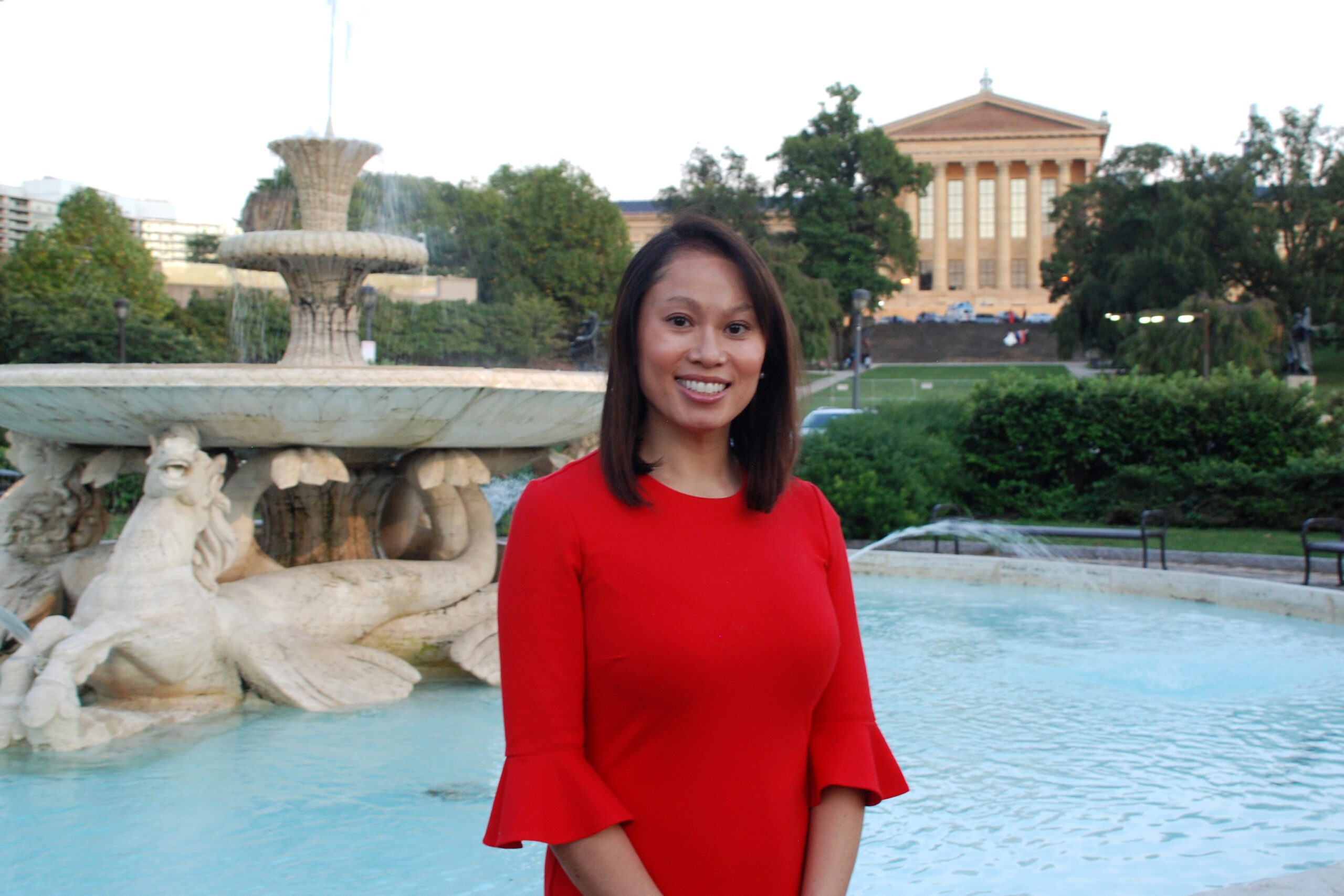
As a double board-certified facial plastic surgeon, Dr. Ho is well-regarded as an expert of facial rejuvenation procedures. She possesses dedicated training in injectable procedures from one of the top facial plastic surgery fellowship programs in the country. Dr. Ho is regionally known for her signature procedures in jawline contouring and attracts patients from all over Pennsylvania, New Jersey, and New York to Philadelphia and Wayne for chin augmentation. Dr. Ho dedicates ample time and effort to establish realistic expectations with every patient. Her treatment philosophy is centered on producing results that are natural and restore facial harmony and balance. She frequently performs injectables in a stepwise fashion across a series of visits to avoid overtreatment. Regarding technique, Dr. Ho may pursue either a needle or cannula approach to non-surgical chin augmentation depending on the patient’s anatomy and treatment goals.
What should patients expect after Chin Augmentation?
Post-Operative Instructions for Chin Augmentation
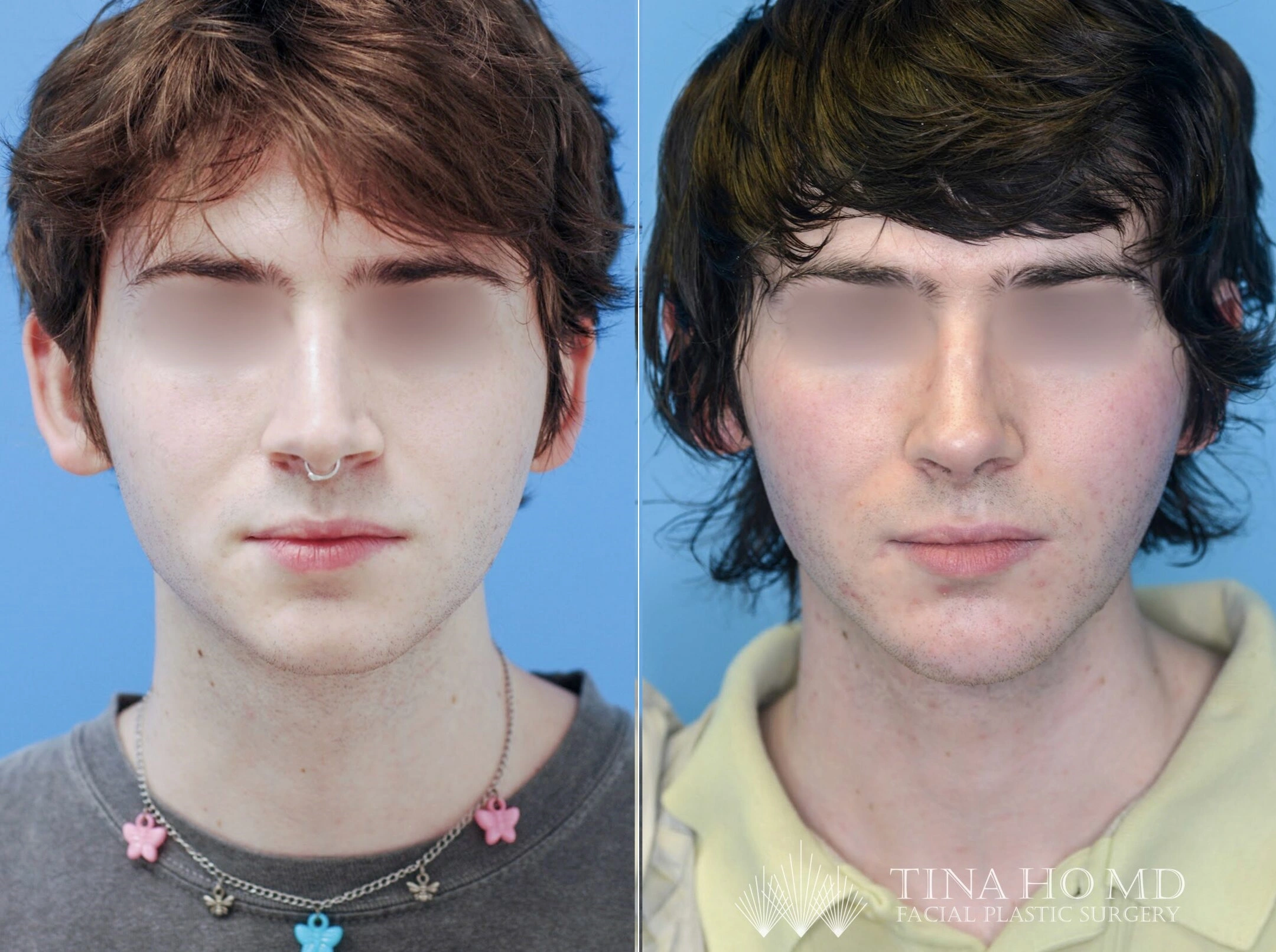
These post-operative care instructions are for patients who have undergone chin augmentation surgery, and they are crucial for achieving optimal results. Patients should adhere to these guidelines and contact Dr. Ho or her staff with any questions regarding their post-operative care.
Activity Instructions and Restrictions:
– Encourage early walking post-surgery to prevent blood clots and support faster recovery.
– Walking to and from the bathroom is recommended the evening following surgery, with at least three 20-minute walks daily starting the day after the procedure.
– Avoid hitting or bumping the chin.
– Refrain from heavy lifting (over 10 pounds), strenuous activities, and prolonged bending for two weeks.
– Use over-the-counter stool softeners like Colace to prevent constipation and avoid straining.
– Avoid household cleaning for two weeks.
– No contact sports or swimming for four weeks.
– Do not pick up small children for four weeks.
– Resume CPAP use only when cleared by Dr. Ho or an ENT surgeon.
Head Positioning:
– Maintain a 30-degree head elevation to minimize swelling for the first week post-surgery.
– Sleeping in a recliner or with two pillows behind the head helps maintain appropriate head elevation.
Cool Compresses:
– Apply cool compresses (ice packs or frozen vegetables) to the chin for 20 minutes every few hours while awake during the initial 48 hours to reduce swelling, bruising, and discomfort.
Compression Dressing:
– A compression dressing is applied around the head and chin post-surgery to prevent fluid collection.
– Ensure the dressing stays dry and in place for the first 24 hours after surgery and then may be removed.
– Patients undergoing additional procedures like submental liposuction, facelift, or neck lift should wear a compression dressing for two weeks.
– If the dressing causes extreme discomfort, feels too tight, or results in worsening pain or swelling, contact Dr. Ho’s office immediately.
Diet:
– Resume drinking and eating as tolerated after surgery.
– Start with gentle, bland foods to encourage appetite and prevent stomach upset.
– Examples include plain crackers, soups, noodles, mashed potatoes, pudding, applesauce, Jell-O, popsicles, and clear, non-diet soda.
– A low-salt diet helps minimize post-operative swelling.
– Poor oral intake should be reported to Dr. Ho’s office.
Bathing:
– Resuming showering is permitted the day following surgery.
– Allow water to run over incisions 24 hours after surgery but avoid scrubbing or soaking incisions.
– Gently pat incisions dry after showering.
– Wait at least 24 hours after suture removal to resume showering over incision wounds.
Incision Care:
– Clean chin incision lines gently with a Q-tip dipped in tap water or saltwater three times daily to prevent crusting.
– Apply Alastin Skin Nectar, Aquaphor, or Vaseline to incisions with a Q-tip after each cleaning three times daily for the first month.
– Follow sun protection precautions, including SPF 35 sunscreen, for 6 to 12 months post-surgery.
Medications:
– Take prescribed antibiotics and narcotic pain medication as directed from the evening after surgery.
– Complete the full antibiotic prescription.
– Eat before taking medication to avoid stomach upset.
– Report any nausea or vomiting due to medication.
– Over-the-counter Tylenol can be taken for mild pain but avoid NSAIDs for the first two weeks to prevent bleeding.
– Contact Dr. Ho’s office if pain is not well-controlled or if focal pain and swelling worsen.
Self Care:
– Resume wearing eyeglasses or contact lenses the day after surgery.
– Avoid pulling clothing over the head for two weeks.
– Shaving the chin area should be postponed for two weeks.
Driving Restrictions:
– Refrain from driving during the first post-operative week, especially while taking narcotic pain medication.
Work and Social Activities:
– Return to work or social activities varies based on physical activity and public contact levels.
– Most patients can resume these activities after seven days, considering the presence of sutures and medication use.
For Out-of-Town Patients:
– If traveling for surgery, stay in town for 7-10 days, arranging accommodations nearby.
Follow-up Appointments:
– The first follow-up appointment with Dr. Ho may be as soon as the day after surgery, during which surgical sites are checked.
– Follow-up appointments at one week include re-evaluation and suture removal.
What to Expect After Surgery:
– Post-operative experiences differ among patients.
– Swelling, bruising, and tenderness will vary in extent.
– Immediate improvement in chin appearance is common.
– Dr. Ho will ensure regular follow-up to monitor healing and patient satisfaction.
Symptoms Requiring Contact with Dr. Ho’s Office:
– Fever (temperature over 100.4 degrees F)
– Increased discomfort or pain
– Signs of infection (Redness, warmth, swelling, or foul-smelling drainage at wound sites)
– Nausea and vomiting
– Drainage (including bleeding) from wound sites
– Open areas along wound sites
– Difficulty breathing
– Chest pain
BEFORE & AFTER PHOTOS
Book Now
– Dr. Tina Ho

TESTIMONIALS
Book Now
FAQ’s
What are other surgical procedures that are routinely performed with Chin Augmentation?
What is the Ideal Chin?
Dr. Ho believes that while every face is unique, the ideal chin demonstrates good projection and contributes to a smooth, well-defined jawline. Male patients often seek a more defined and square-appearing chin to reflect a more masculine look compared to their female counterparts. The most anterior point of an ideal chin should be at or approach a vertical line referred to as the Zero Meridian of Gonzalez-Ulloa that runs through the nasion (root of the nose) and is perpendicular to the Frankfort horizontal line, which runs through the inferior orbital rim and superior limit of the ear canal. Dr. Ho uses this anatomic principle as a foundation for her surgical technique as well as her aesthetic intuition in chin augmentation.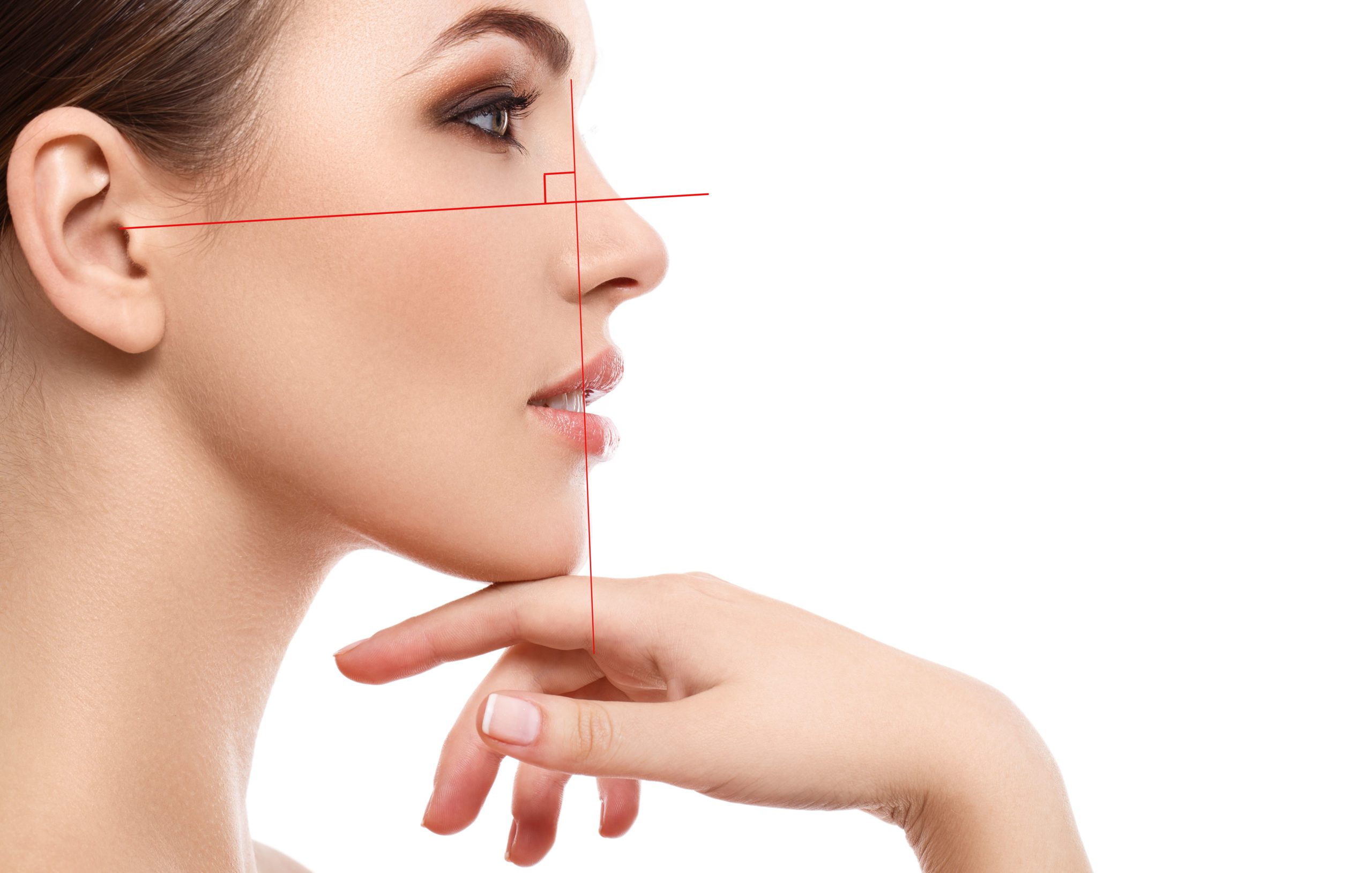
On profile view, the most anterior point of an ideal chin should be at or approach a vertical line (Zero Meridian of Gonzalez-Ulloa) that runs through the root of the nose and is perpendicular to a horizontal line that runs through the inferior orbital rim and superior limit of the ear canal (Frankfort horizontal line).
What is the Cost of a Surgical Chin Augmentation?
The cost of a surgical chin augmentation by Dr. Tina Ho varies by patient and type of implant needed, may be significantly less if combined with other procedures at time of surgery including rhinoplasty, facelift, and neck lift. The average cost is $7,000-$9,000, which includes the cost of implants plus facility fees.
Filler starts at $800/syringe, may need minimum 1-2 syringes or more for adequate results.
Book Now

